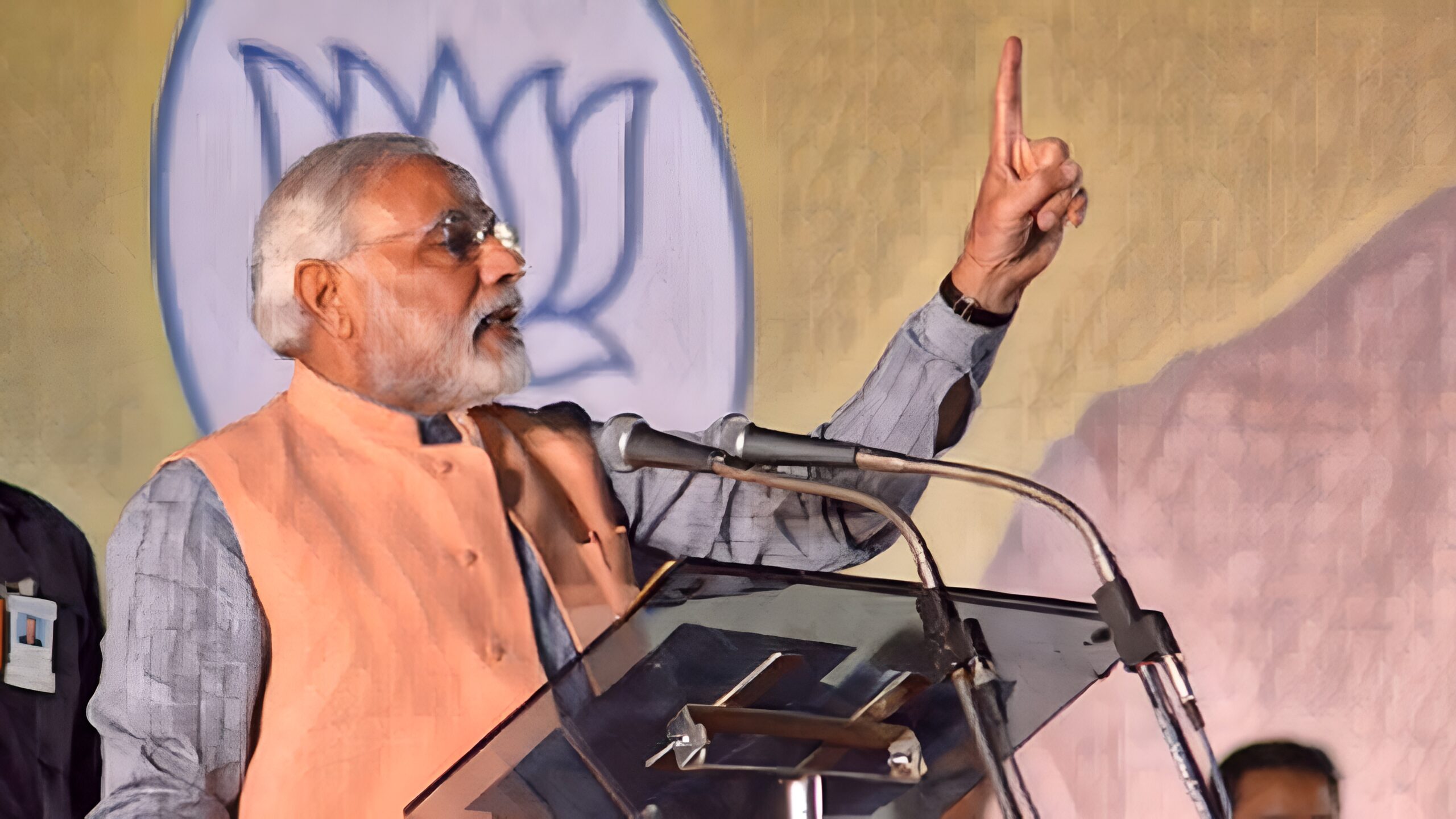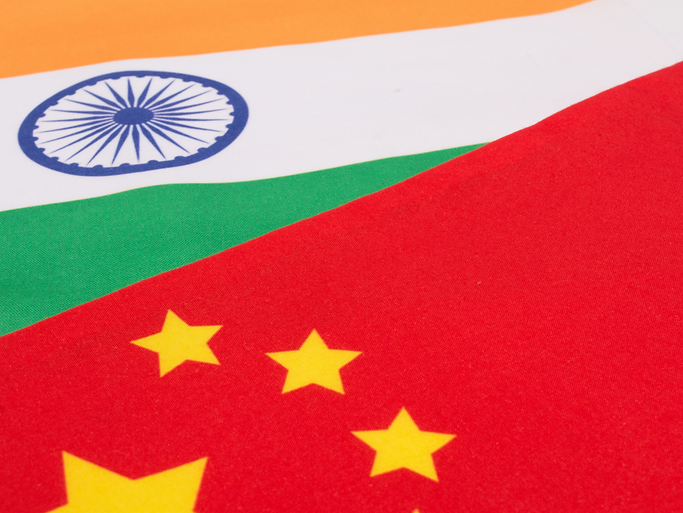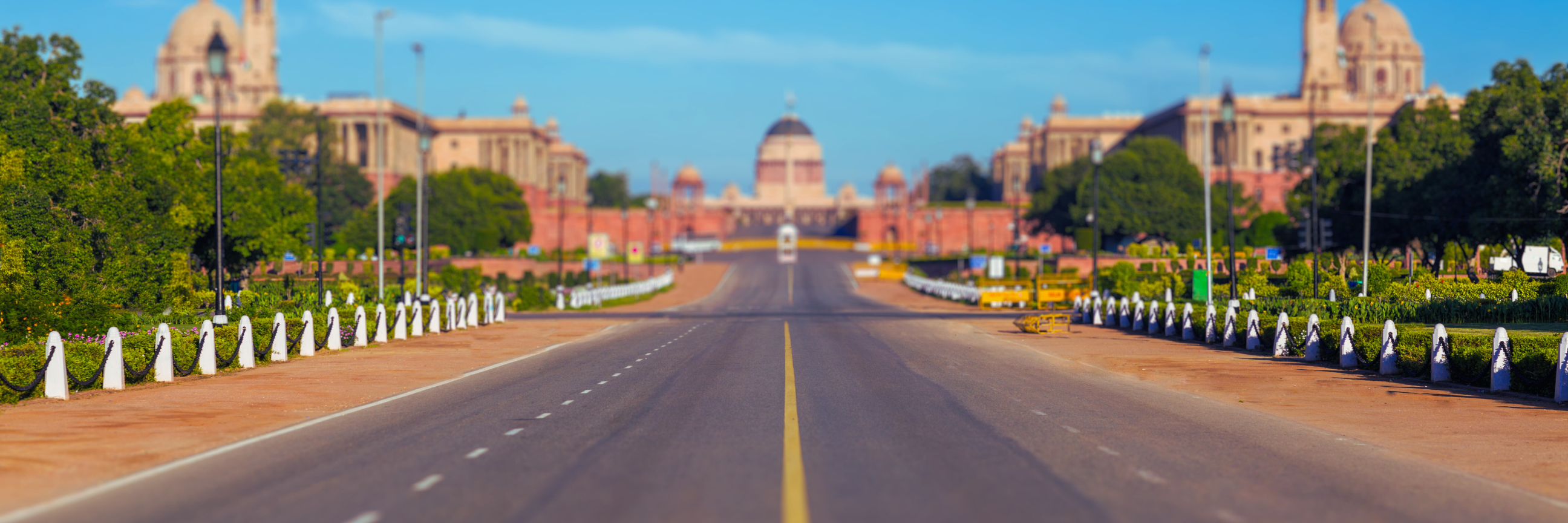Do Global Corporations and Investors consider India becoming un-democratic, autocratic? Should they worry about Modi being a ‘Strong Man’?
These are legitimate worries. India is now in the radar to be the next China. Global corporations and Global institutional investors are looking to invest billions of dollars in India as a strategic long-term investment opportunity. India is also a strategic counter to moving investments and production away from China. Can investors trust Modi?
Global Corporations and Investors have seen the financial impact of investing in undemocratic, strongman led countries. History is replete with several such examples of political ‘strongman’ destroying economies and markets. One doesn’t need to reach out to history books. In our recent memory, we have seen countries like Brazil, Turkey, Russia and increasingly China, taking decisions which reverse several years of trust and confidence.
Such decisions have made some of these countries ‘uninvestable’. Under certain leaders or certain regimes, investors will avoid making investments.
We do not think this worry has got anything to do with the form of political system. Corporations and Investors have well invested in countries and markets which are run by communist ideologies, monarchies, military governments. The worry stems from individuals who have unlimited power to decide and destroy.
Narendra Modi is extremely popular. He is now in his second-term as prime minister with a decisive mandate and looks very likely to win a third term in 2024.
However, India is not China, Russia or Turkey. Modi is not a Xi, Putin or Erdogan.
- India is a parliamentary democracy with US like Federal, State and Provincial structure.
- Indian administration is de-centralised
- People power and protests – a mark of democracy – is alive in India
- Barring the act of demonetisation – Modi has not destroyed the economy. Investor sentiment on the contrary has been buoyant towards India.
- India needs foreign capital – Modi cannot afford to antagonise global corporations and investors
- India is an aspirational lower income country. India’s young demographic profile needs job creation to reap the dividends. Modi is aware of the social and political perils of lack of growth and employment.
- Democratic Institutions: Be it the RBI and SEBI in banking and capital markets; to the courts from magistrate to the supreme court; and to other sectoral regulators – have been seen to uphold the rule of law.
We would think the Prime Minister and his party seem to be well-aware of this being a potential concern. For instance, they seem particularly perturbed by India’s ranking in global perception surveys.
India’s rankings on several opinion-based indices of democracy, press freedom etc. have seen a remarkable decline since prime minister Narendra Modi’s government came to power in 2014.
For someone like Prime Minister Modi, who is rather sensitive about his global image, this must be concerning. The Prime Minister has spoken about India being a ‘VishwaGuru’ – (‘world teacher’ – a positioning of India’s soft power of civilisation, culture, and tradition). However, this fall in India’s rankings on some basic bed-rock of that soft power which stems from core democratic principles of civil liberties, political culture, electoral process is surely not a good outcome.
The government seems to be taking notice. As a start, the prime minister’s advisory council, released a study on why India’s ranking has fallen in some of these opinion-based studies (see table and link below).
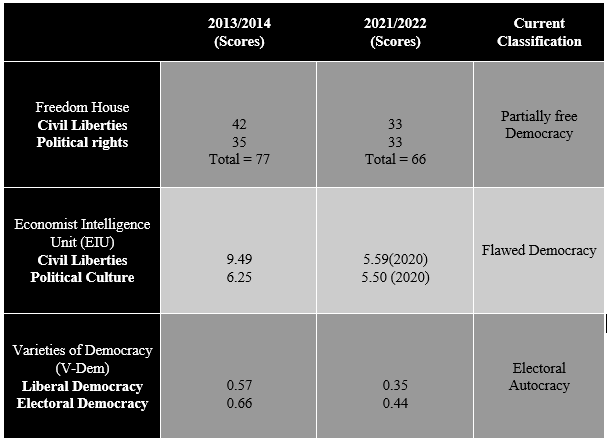
(Source: why India does poorly on Global Perception Indices, EAC-PM working paper, Nov-2022) – https://eacpm.gov.in/wp-content/uploads/2022/11/Global-perception-indices_Final_22_Nov.pdf)
However, as with many other things, instead of offering an internal explanation, they have blamed it on biased opinion of ‘experts’ polled for these surveys. The report claims that India does well on objective parameters.
However, on subjective assessments based on views from experts, India’s scores and ranking has fallen.
There is some merit in the government’s angst. For instance, the report states that, as per Freedom House, Northern Cyprus, a country only recognized by Turkey, has a higher score and rank than India. The EIU scores Hongkong to have a higher score on civil liberties as compared to India. Some of the opinion scores are what they were during the dark days of ‘Emergency’ in mid 1970s when Indira Gandhi suspended the constitution. We do not have such a scenario now. Thus, they feel the ratings and scoring is arbitrary.
That these scores have a weightage in determining India’s Sovereign credit rating is material enough for the government to be concerned about the fall in rankings and thus write about it.
There are indeed some socio-political concerns about PM Modi, the Bharatiya Janata Party (BJP), and the ideological mothership Rashtriya Swayamsevak Sangh (RSS). The party’s social stance towards 200 million Muslims; the corporate consolidation and the party’s hold on media and press; the use of central agencies to target political opponents; the opaque political funding; the tight restrictions on NGO’s to secure overseas funding. These are all aspects which can curb democratic rights and thus reflect in the fall in scores.
There is also a sense of greater centralisation of power and activities. The Prime Minster’s Office (PMO) is the largest it has even been in terms of staffing and many claim that most governmental decisions stem from the PMO. From an economic standpoint, some amount of control and co-ordination from the top may be desirable to execute economic projects across the country. However, we also know that a country as vast, diverse like India cannot be run by one man or one party.
1) India is a parliamentary democracy – with a Federal and State structure
At the Federal or Union or Centre as we call, the Bharatiya Janata Party (BJP) has emerged as the single largest party with clear mandate by winning more than 300 out of 547 seats in two successive general elections (2014, 2019; about ~35% of vote share). Although, the government in power is a coalition called the National Democratic Alliance (NDA), the BJP does not need the other parties support to form the government or to prove its majority in the lower house of parliament (Lok Sabha). Narendra Modi was appointed head of the party in the parliament and hence was also chosen as the Prime Minister, a post he has held since May 2014.
Thus, in matters of defence, international relations and finance, or in national emergencies like the pandemic, the federal government under PM Modi has all decision-making powers.
For most other aspects, states who have similar political and electoral process, have their say in deciding and acting on laws and legislations.
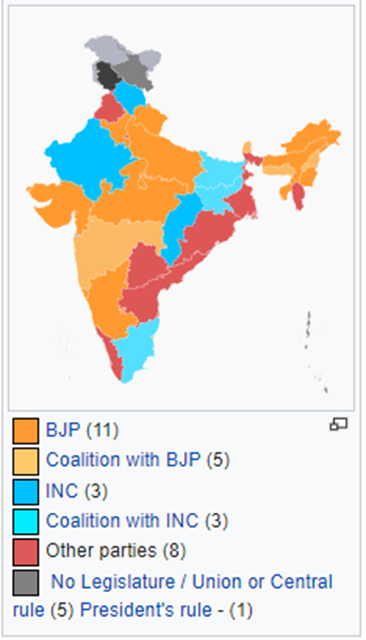
As the chart on the left shows, of the 28 states and 8 Union Territories that India has, BJP and its allies are in power in only 16 of those states. They control the Centre but are not in power in many states. This has significance on how much Modi and BJP can influence social, political, and economic activity.
As per latest publication dated 23 September 2021 from Election Commission of India, the total number of political parties registered was 2858, with 8 national parties, 54 state parties and 2796 unrecognised parties.
India, thus has a very vibrant and active political representation across states, regions, religions and ideologies.
Thus, there is significant political activity, political camaraderie as well as political opposition to the government at the Centre. India has the first past the post concept of who forms the government. That said, in all levels of administration, there is always a sizeable number of opposition parties/other elected representatives.
(Source: Wikipedia, updated December 2022)
Modi and BJP do have brute majority in the lower house of the union parliament. It also can stitch up majority in the upper house of the union parliament. It can thus get laws, acts and bills passed at the centre level. However, it requires to work with other parties at the state level to build consensus and implement its decisions nationwide.
2) Indian administration is de-centralised
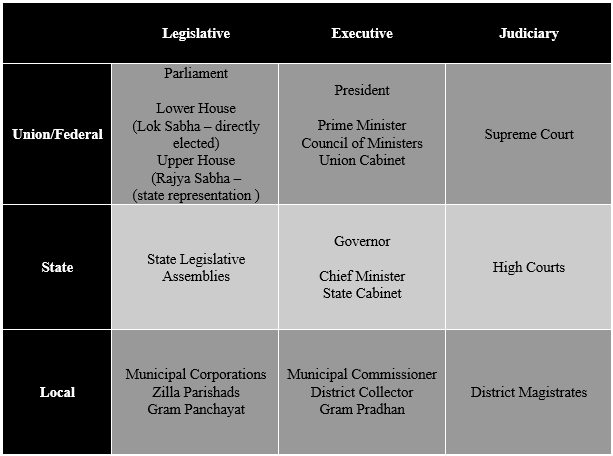
Finances and power are devolved from the Centre to the States and from States to Local governments. The legislators at all levels are democratically elected representatives. There can be many instances of for eg. BJP government in the Centre; the Indian National Congress (INC) in one of the states and several districts under the state being represented by other parties.
3) People Power and Protest in a Democracy
Even if the Centre and States under BJP/Modi control can push through certain laws, acts, India has time and again shown people power and people protests on the streets forcing the governments in power to reverse their decisions.
There are many instances but two recent events in 2019 and 2020 depicted this in good measure. The protest against the proposed Citizenship Amendment Act (CAA) for it being seen as alienating Muslims forced the government to take back the proposed ordinance from the parliament.
The repeal of the Farm bills was another such example. Agriculture is a state subject. The Modi government enacted three ‘model’ laws for the farm sector, which were meant to be implemented by states. The proposed bills were seemingly good, and most states and political parties supported it, the bills were passed in the parliament. However, prolonged street protest by certain section of the farmers forced the government to repeal all the three laws. This also showed that in India, despite the power you hold, if you do not build consensus and take the people along, it will prove to be difficult to run roughshod and muscle through any decision.
4) Barring Demonetization, Modi Has Not Destroyed the Economy
For Investors and investments, on a net-net basis, this government has continued and built on the overall reform agenda that India has seen and known over the last 40 years. This has been a feature of every government; be it from the left or right; BJP or congress; single party or coalition; the reform agenda has been maintained.
The disaster under this government, in what was seen as PM Modi’s personal decision with very little discussion was the stupid act of demonetisation. It wrecked the economy and put the real estate, construction, and the informal sector under huge stress. The credit crisis of 2018 was precipitated by the sudden shock of demonetisation.
Apart from that, we have generally seen the government to be managing the economy reasonably well. They have kept inflation under control, fiscal deficit reasonable and seem to be pro-active on external and internal management of the economy. Structural reforms in cleaning up the banking sector, GST, Bankruptcy code, Real Estate Regulation were taken up, which shows that the government was willing to take short-term pain for long-term benefits.
The government has also played a huge role in spawning the India stack – the entire digital eco-system which now pervades identity to payments to credit, to health and to e-commerce.
5) India is NOT China. India needs Capital. India Cannot Antagonise Foreign Investors
China has grown and has access to domestic capital for its growth. It also has the technology in basic industries to support its economy. India is entering its demographic growth path and requires capital and technology to fund its growth aspirations.
India cannot antagonise the foreign MNC or the global pension fund. It needs long-term capital and long-term cutting edge technology.
We thus feel, even if, at the social level, the BJP and Modi may seem un-democratic, autocratic, or communal in its practices, but to the foreign investor, it will continue to layout the red-carpet
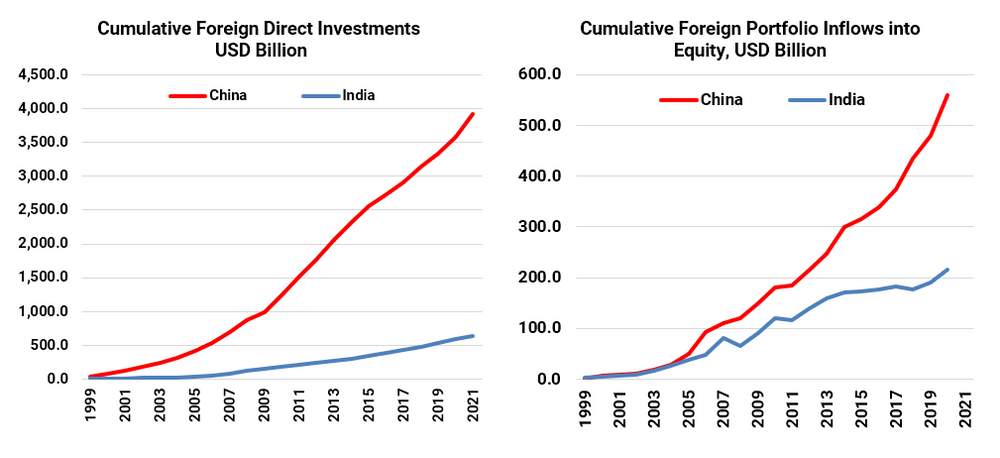
(Source: World Bank, Annual Data till December 2021)
6) Income and Jobs or Political Control and Social Engineering: Demographic Dividend to Demographic Disaster
India’s average per-capita income is below US $3,000. This means many are at sub-sahara income levels. India’s average age is ~28. India needs to provide ~27,500 jobs per day to its educated and aspirational youth. A government which cannot meet this aspiration, will most likely not remain in power for long. I think the BJP and Modi are well-aware of this. If they need to be in power, they need to deliver – economically.
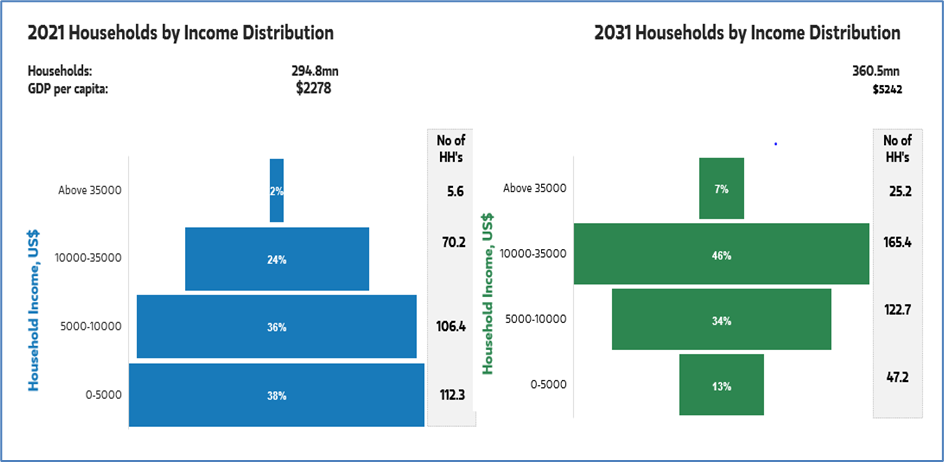
(Source: Morgan Stanley research, November 2022)
7) Democratic Institutions
- In the finance and capital markets, regulators like Reserve Bank of India (RBI) and Securities and Exchange Board of India (SEBI) have time and again displayed their independence and have created world-class regulatory and market structures to enable the growth of the economy.
- The courts by and large are independent. Certain judges, lawyers may be compromised. But overall, rule of law tends to prevail with multiple level of grievance redressal.
- Devolution of power is essential in a democracy. More funding and power at village level will result in more grassroot development as compared to concentration of power.
India thus has enough check and balances within its system to resist control in the hands of one person. India’s best bet is to also always have coalition goverments which makes everyone inter-dependent. We have always believed that for a country as diverse as India, a coalition government with representation from parties from different states, representing the myriad castes and languages and different aspirations will ensure that decisions are driven by building consensus and are hence more democratic.
India as grown at +6% Real GDP despite and in spite of being a democracy and with coalition governments at the Centre and in a few states.
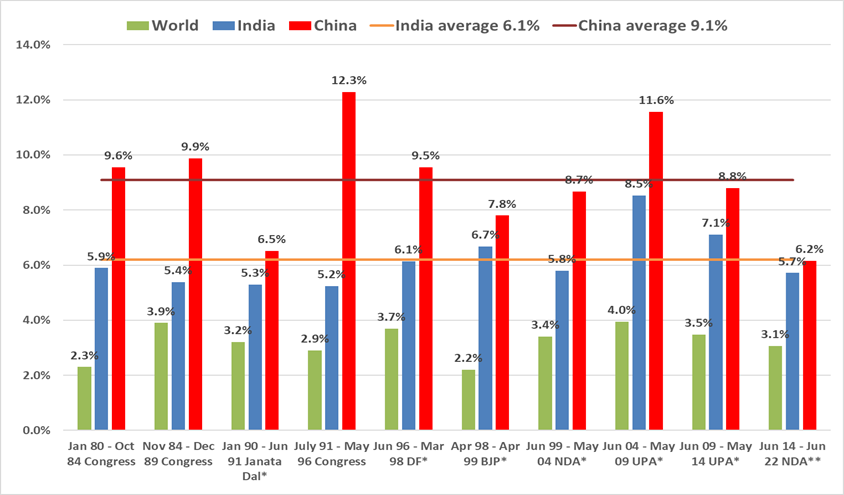
(Source: GDP growth as per periods of political party in power. Data from Lok Sabha, World Bank, world GDP for 2022 is annual data)











